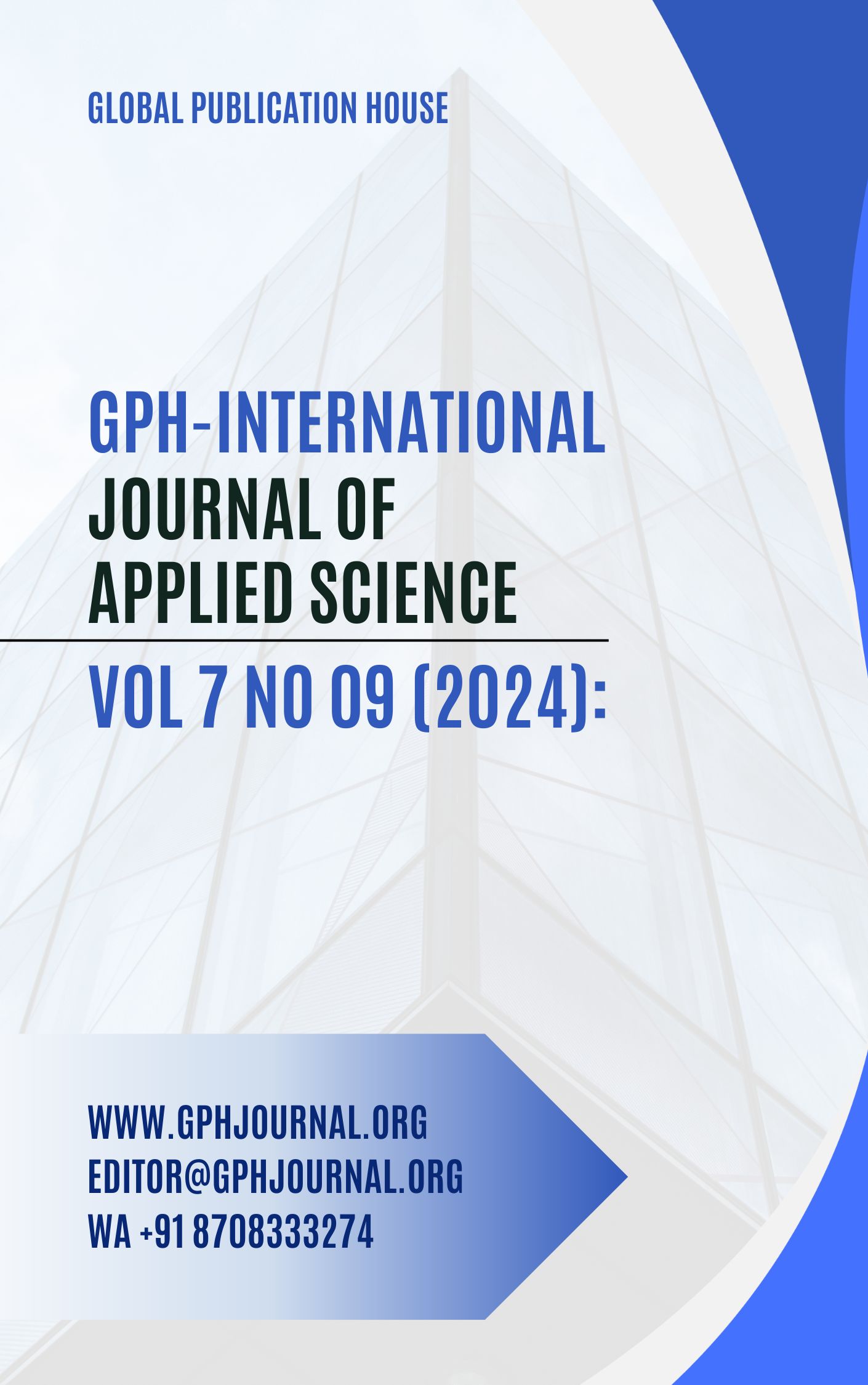A Study on Applications of Mathematical Modelling in Agriculture: Enhancing Crop Productivity and Food Security in Kogi State, Nigeria
Abstract
This study investigates the applications of mathematical modelling in enhancing crop productivity and food security in Kogi State, Nigeria. We considered various modelling approaches, including crop growth models, pest population dynamics, irrigation management, and fertilizer optimization, to analyze their impacts on agricultural practices. Using MATLAB, we simulate a pest population dynamics model, which revealed critical insights into the interactions between pests and crops. The results indicate a gradual decline in pest populations, ultimately reaching zero, due to effective pest management practices and diminishing food resources as crop health declined. Initially, the crop population showed robust growth, benefiting from favorable environmental conditions and effective early pest management. However, as pest pressures increased, crop health deteriorated, leading to reduced yields. The Whether Research and Forecasting (WRF) model helped rice farmers adjust planting schedules, resulting in 15% yield increase compared to those using traditional methods. The CERES model optimized fertilizer use for maize, reducing fertilizer by 20% while increasing yield by 25%. The SIMPEST model for pest control on tomato farms reduced pesticide use by 25% and crop loss to 10%. This study emphasizes the importance of integrated pest management strategies that not only control pest populations but also promote crop resilience. In practical applications. Our findings demonstrate how mathematical models enhance crop productivity and resources efficiency, it advocates for collaborative efforts among farmers, researchers, and policymakers to leverage mathematical modelling as a tool for developing sustainable agricultural practices that address food security challenges in Kogi State and beyond.
Downloads
References
Ajani, O. M., Oyebanji, O. J., & Abiodun, A. J. (2021). Modeling the effects of climate change on agricultural productivity in Nigeria. Journal of Agricultural Science, 13(4), 1-10. https://doi.org/10.5539/jas.v13n4p1
Allen, R. G., Pereira, L. S., Raes, D., & Smith, M. (2018). Crop evapotranspiration—Guidelines for computing crop water requirements. FAO Irrigation and Drainage Paper, 56.
Baker, J. S., Chen, J., & Edwards, J. (2019). Integrating Cellular Automata in land-use planning for sustainable agriculture. Land Use Policy, 81, 424-434. https://doi.org/10.1016/j.landusepol.2018.11.018
Balk, D. L., Yetman, G., & Jones, B. (2018). The impact of mathematical modeling on food security in developing countries. Food Security, 10(1), 33-46. https://doi.org/10.1007/s12571-018-0774-2
Balk, D. L., Yetman, G., & Jones, B. (2020). Integrated modeling approaches for sustainable agriculture: Lessons from Nigeria. Food Security, 12(3), 553-566. https://doi.org/10.1007/s12571-020-01008-7
Cassman, K. G., Dobermann, A., & Walters, D. T. (2017). Agroecosystems, nitrogen-use efficiency, and sustainability. Nature, 422 (6928), 681-686. https://doi.org/10.1038/nature01550
Dawson, T. P., & Hollis, J. M. (2020). Crop growth models: A review of approaches and their use in agriculture. Agricultural Systems, 177, 102683. https://doi.org/10.1016/j.agsy.2020.102683
Kalu, A. A., Okwu, C. N., & Oko, J. O. (2021). Collaborative modeling for agricultural policy making: A case study of Kogi State, Nigeria. African Journal of Agricultural Research, 16 (2), 1-12. https://doi.org/10.5897/AJAR2021.15543
Kirk, W. W., & O'Neill, K. (2019). Modeling pest and disease dynamics in crops: Implications for management. Agricultural and Forest Entomology, 21(3), 217-227. https://doi.org/10.1111/afe.12322
Klein, E. K., & Zhang, Y. (2021). Economic modeling in agriculture: Assessing the profitability of crop production. Agricultural Economics, 52(3), 513-524. https://doi.org/10.1111/agec.12629
Lobell, D. B., Schlenker, W., & Costa-Roberts, J. (2014). Climate change and global crop yields. Nature Climate Change, 3(2), 112-115. https://doi.org/10.1038/nclimate2100
Odeh, J.O., Agbata, B.C., Ezeafulukwe, A.U., Madubueze, C.E., Acheneje, G.O., Topman.N.N (2024) A mathematical model for the control of Chlamydia disease with treatment strategy. JMAR, 7(1): 1-20
Ojo, A. O., Adewumi, M. O., & Ajibola, A. M. (2020). Enhancing crop productivity through mathematical modeling in Nigeria: A review. International Journal of Agricultural Sciences, 10(2), 215-224. https://doi.org/10.33687/ijasc.002.00009
Ojo, A. O., Adewumi, M. O., & Ajibola, A. M. (2022). Enhancing crop productivity through technological innovations in Nigeria: A review. International Journal of Agricultural Sciences, 14 (2), 215-224. https://doi.org/10.33687/ijasc.002.00009
Pimentel, D., & Burgess, M. (1995). Soil erosion and agricultural sustainability. Journal of Soil and Water Conservation, 50(5), 408-416.
Shior, M.M, Agbata, B.C., Acheneje, G.O., Odeh, J.O., Omale, A.J., Oko, I.M (2024), Applications of first-Order Ordinary differential equations to real life system. IJSAEP, 3(1):1-7
Singh, S., & Kaur, R. (2020). Decision support systems in agriculture: Integrating mathematical models for enhanced productivity. Computers and Electronics in Agriculture, 177, 105661. https://doi.org/10.1016/j.compag.2020.105661
Van Ittersum, M. K., & Rabbinge, R. (2013). Global food security: Role of yield gaps and land use. Field Crops Research, 143, 37-47. https://doi.org/10.1016/j.fcr.2012.10.006
Zhang, Y., & Wang, X. (2022). Advancements in precision agriculture through mathematical modeling: A review. Computers and Electronics in Agriculture, 184, 106063. https://doi.org/10.1016/j.compag.2021.106063
Copyright (c) 2024 GPH-International Journal of Applied Science

This work is licensed under a Creative Commons Attribution-NonCommercial-NoDerivatives 4.0 International License.
Author(s) and co-author(s) jointly and severally represent and warrant that the Article is original with the author(s) and does not infringe any copyright or violate any other right of any third parties, and that the Article has not been published elsewhere. Author(s) agree to the terms that the GPH Journal will have the full right to remove the published article on any misconduct found in the published article.























